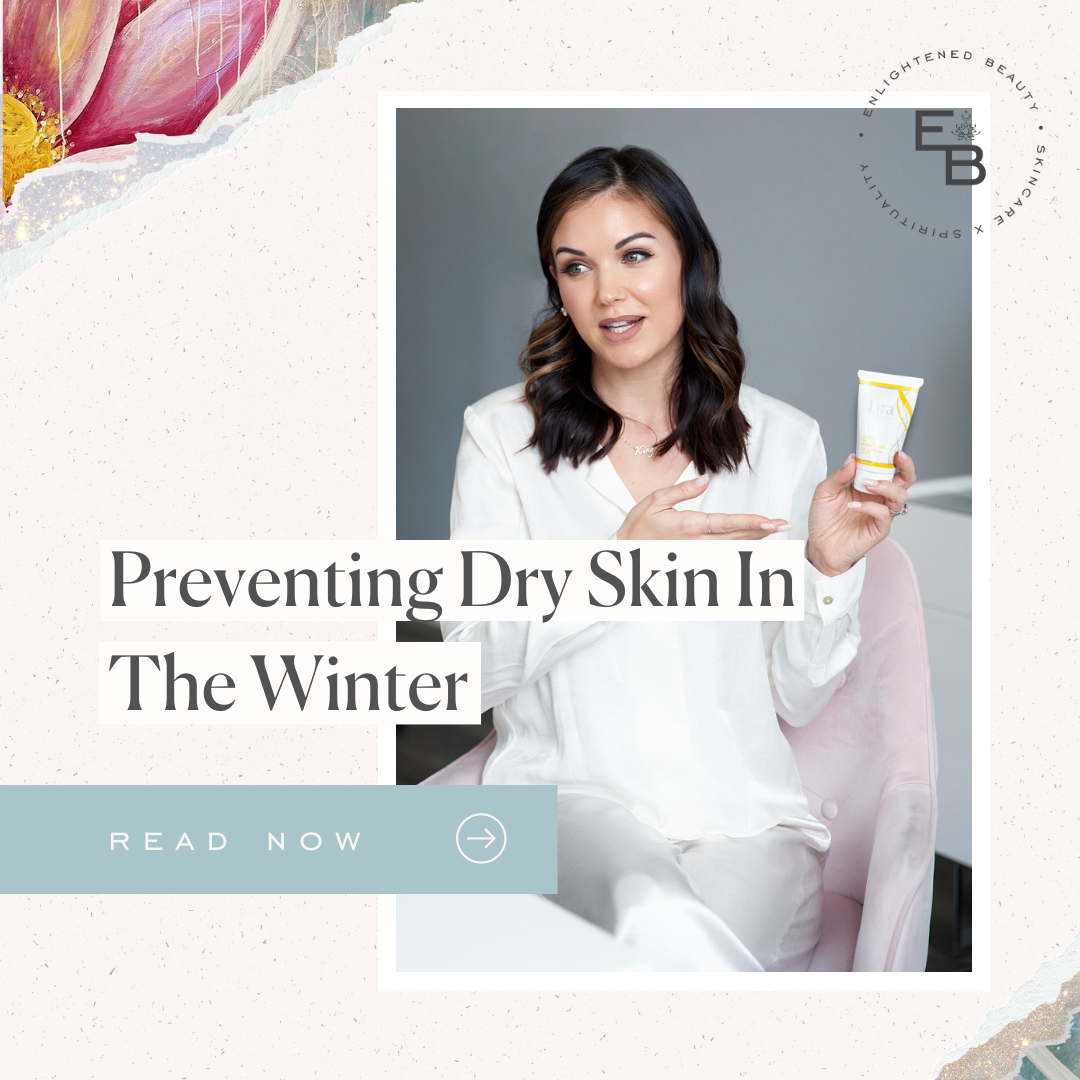Can Retinol and Niacinamide be used together?
Retinol and Niacinamide are basically Batman and Robin’s answer to skin care. Not only does this superstar duo look great together, but it also gives you the complexion results you’ve been waiting for. There are plenty of studies that show the success of these two ingredients in treating skin. So, let’s take a closer look at how to use them together in your skincare routine.
What is Niacinamide? Niacinamide is a water-soluble form of Vitamin B3 found in the body that is essential for keeping your skin healthy. It has a strong moisture-locking effect that hydrates the skin while repairing damage to the protective barrier.
Due to Niacinamide’s antioxidant properties, it can also fight environmental factors like pollution, UV damage, toxins, and skin stressors. What is Retinol?
Retinol is a Vitamin A product that is known for clearing dirt, bacteria, and sebum buildup from pores, making it an effective ingredient for fighting skin blemishes like blackheads and acne. With its exfoliating benefits
This skin-renewing ingredient can fight signs of aging like fine lines and wrinkles.
Since retinol is one of the most popular skin care ingredients on the market, you have a wide variety of retinol-rich products to choose from. Since retinol can cause some skin reactions, such as dryness and irritation, it is recommended that you consult a dermatologist if you are unsure which retinol concentrate is best for you and your skin. For more information on the most effective forms of retinol, visit the Beauty Insiders blog.
Can I Mix Retinol with Niacinamide?
These two popular skin care ingredients can improve the skin in a variety of ways, from reducing the appearance of blemishes and acne to even out skin tone and fighting signs of aging. Here are some of the benefits you can expect from using these products:
Skin Care Benefits of Niacinamide. Increases cellular energy. Helps hydrate the skin. Reduces signs of aging. Helps treat acne and other skin imperfections. Improves the appearance of hyperpigmentation. Repairs skin after sun damage. Skin Care Benefits of Retinol. Skin is chemically exfoliated, making it look more radiant. Reduces signs of aging. Eliminates active spots and acne. Evens out skin tone and reduces hyperpigmentation.
As you can see, using niacinamide and retinol in one product or as part of your skin care routine can lead to many improvements. You’ll also find that using these ingredients together can have a positive impact on the effects of both on the skin. For example, applying a formula containing niacinamide topically can reduce the irritation caused by retinol.
As part of your daily regimen, niacinamide protects the skin barrier, attracts moisture, and counteracts the initial dryness of the skin caused by retinol. You’ll notice fewer side effects.
However, you need to be careful when adding retinol to your skin care routine before applying any products to your face.
How to Use Retinol and Niacinamide Together?
You have a variety of options when it comes to using niacinamide and retinol. The easiest and most convenient way is to use a product that contains both powerful skin ingredients. If you decide to use it in separate products, it’s best to use niacinamide first because it protects the skin from the irritation caused by retinol.
Here’s a quick overview of how to use retinol and niacinamide in your skin care routine. After thoroughly cleansing your skin and removing makeup, bacteria, and dirt, start by cleansing and drying your face. If you plan to exfoliate your skin, now is the time to do so. However, if you have dry or sensitive skin, you may want to skip this step.
Depending on your skin type, you can use niacinamide and retinol separately or in one product. If you use separate products, it is best to start with the niacinamide. Therefore, make sure the product has the thinnest/lightest formula possible. Use the retinol product of your choice after the niacinamide.
Don’t forget to apply sunscreen with SPF 30+. This skincare routine shows the most effective and simple way to use retinol and niacinamide together. Many people find that this works well for their skin. If you notice that your skin becomes flaky, red, and uncomfortable, you may want to reduce the frequency of use and consider the strength of the retinol. There is a dedicated blog post that explains the strength of retinol to use in more detail.
What are the benefits of using retinol and niacinamide together?
The benefits of each ingredient have been described earlier. If you incorporate them into your daily skincare routine, you will achieve effective yet gentle results for your skin. Significantly improve the overall complexion health and appearance.
Niacinamide gently cares for the skin, helping to reduce signs of premature aging, discoloration, and breakouts (from blackheads to pimples). Retinol offers similar benefits, but as you know, there are some limitations. Combining the two ingredients is a safer way to use retinol, especially if you haven’t already incorporated it into your skincare routine.
Can Niacinamide Be Used with Retinol and Vitamin C?
You now have a better understanding of how retinol and niacinamide can benefit your skin. It surely can’t hurt to add another ingredient like vitamin C to the mix, right? Not true! No matter how confident you are in using these skincare ingredients, making your own cocktail of active ingredients can feel overwhelming.
One of the most important factors to remember is that not all skincare ingredients work well together. Unfortunately, niacinamide and vitamin C don’t work well together because they can cause redness when used together. To avoid this and get the benefits of using all three active ingredients, you can use vitamin C in the morning and a combination of retinol and niacinamide in the evening.
This suggests that certain skincare ingredients, such as retinol, need to be used with caution, but can actually find skincare teammates. By combining niacinamide and retinol, you can improve your complexion and address many skin concerns, from fine lines to hyperpigmentation, with a highly effective formula.
DQH Knowledge drop: In your 20s, your skin cell turnover decreases. (Cell turnover is a key component in keeping your skin youthful.) You know what else slows down? Your collagen production. Starting in your 20s, collagen decreases by about 1 percent per year. Should you want to prevent fine lines and wrinkles, start by eliminating behaviors that contribute to premature aging. “If it’s bad for you, it’s bad for your skin,” says dermatologist Michel Somenek.
“Cigarette smoking reduces blood flow to the skin and causes premature wrinkling and a dull skin texture. Making the repeated pursed motion to inhale can also cause smoker’s lines. Alcohol and recreational drugs are toxins for the skin that damage its cellular structure and DNA,” Somenek tells us. “The faster you eliminate vices while you are young, the better chance your skin and body have to recuperate.” Also, adopting an anti-aging routine in your 20s is key. After all, the best offense is a good defense. We spoke to Somenek and experts Joshua Ross and Audrey Kunin to find out more.
Keep reading for the best anti-aging products for your 20s, according to skincare professionals.
Sunscreen
“We all know that the sun is the number one cause of skin aging and starting the prevention in your 20s is very important,” Ross says. “The majority of your sun damage won’t start to appear until you’re in your 30s, so don’t wait until you see it surface or you’ll be behind the curve. Stay ahead of it with a good-quality zinc-based sunscreen worn daily.”
Farmacy Green Defense Daily Mineral Sunscreen
An invisible sunscreen with SPF 30, plus botanical extracts meant to protect skin with tons of antioxidants. Bonus: It’s clean and fine to use under makeup.
Bareminerals Complexion Rescue™ Tinted Moisturizer Broad Spectrum SPF 30
Although we recommend you use your SPF and moisturizer separately, we also understand moments when you don’t have time or energy for that extra step. For those times, this bareMinerals moisturizer is a great thing to have on hand.
Vitamin C Serum
“A great introduction to anti-aging is to start with a vitamin C serum in your morning skincare routine,” Ross says. “It’s a powerful antioxidant that will neutralize free radicals and brighten the skin.” He adds that it’s a great way to counteract the effects of the sun’s harmful rays, which, as previously mentioned, are among the biggest causes of premature aging.
Drunk Elephant C-Firma™ Vitamin C Day Serum
The Drunk Elephant C-Firma is a lightweight serum that promises to give skin a glow by combining the brightening powers of vitamin C with ferulic acid, l-ascorbic acid, and vitamin E. The included sodium hyaluronate is meant to replace hydration loss, so you shouldn’t have to deal with any irritation.
Sunday Riley C.E.O. Rapid Flash Brightening Serum
This potent serum is jam-packed with vitamin C (15 percent, to be exact), which means it’s a potential superstar at both brightening skin and dousing it in antioxidants.
Peptides
Using peptides on your skin has many benefits, says Somenek. “The skin barrier is what defends the body against pollution, UV rays, bacteria, and toxins. It can be damaged by several everyday factors. Using topical peptides aids in building a stronger barrier,” he says. “Peptides comprise elastic fibers, which are a type of protein. These fibers help to make skin appear taut and firm. Peptides can also help repair damaged skin, relieve inflammation, and even out skin tone. Some peptides can kill acne-causing bacteria that is common in 20-somethings.”
Kunin agrees, saying, “Peptides are an excellent entry point for supporting collagen.” She recommends looking for face and eye treatments that contain these collagen-boosting powerhouses.
Charlotte Tilbury Magic Eye Rescue Cream
This Charlotte Tilbury super-emollient eye cream has a base of coconut oil and shea butter (read: it’s incredibly hydrating). Botanicals plus peptides are meant to help reduce dark circles and boost collagen, respectively.
This creamy moisturizer serves up potent collagen-boosting peptides and pycnogenol, and antioxidant-rich vitamin C. “Instead of sitting on top of the skin, peptides penetrate the outer layer so they go deep. The ‘signals’ they send tell the cells to produce elastin and collagen, which are needed for youthful-looking skin,” explains Somenek.
At-Home Peel Pads
Remember that skin cell turnover fiasco we talked about earlier? One way to help support it is by exfoliating. “Exfoliation is important to help keep skin fresh and luminous,” Kunin says. She recommends using at-home peel pads as an easy and effective way to exfoliate.
“The goal in your 20s is to fight the slowing pace of cell turnover. It is wise to use products that gently exfoliate, yet still remove oil and other impurities. Products that have Alpha Hydroxy Acids (AHA) or Beta Hydroxy Acids (BHA) are a good choice.”
According to Somenek, you should only exfoliate two to three times a week. “People of all ages are guilty of over-exfoliating and that can be too much of a good thing,” he says.
Dermadoctor Kakadu C Intensive Vitamin C Peel Pad
A few swipes of this Derma Doctor powerful peel pad promise to leave your skin glowing and smooth, thanks to the seven (yes, seven) types of chemical exfoliants, including AHA and BHA. It also contains vitamin C via Kakadu plum extract for added brightening and antioxidant protection.
KEY INGREDIENTS Kakadu plum extract is sourced from the Kakadu plum, a fruit grown in northern Australia. It contains vitamin C, which restores the skin’s natural barrier, increases collagen production, and soothes irritation.
Dr. Dennis Gross Skincare Alpha Beta® Universal Daily Peel Pads
These are the gold standard of peel pads, with a cult following and over 900 five-star reviews on Sephora. They’re easy to use and contain a blend of anti-aging exfoliating acids.
Emollient Night Cream
“In your 20s, you need to start upping the hydration in your skincare routine. You may have been cautious of over-moisturizing because of acne in your teens, but as you enter your 20s, your skin transitions and becomes drier,” Ross says. “I recommend an emollient night cream added into your evening skincare regimen.”
“Twenty-somethings need to make sure that they are not using creams that will clog their pores and cause excess oil production,” says Somenek. Opt for non-comedogenic products.
Cerave Skin Renewing Night Cream
One great choice is the CeraVe Skin Renewing Night Cream, which is a non-comedogenic night cream that leaves skin soft and glowy. It combines the moisturizing powers of ceramides and hyaluronic acid.
RoC Retinol Correxion Max Hydration Creme
“The best night cream ingredients contain retinol, benzoyl peroxide, and/or salicylic acid or hyaluronic acid. The goal is to moisturize, yet remove excess oil,” says Somenek. This Roc Retinol Correxion cream fits the bill as it contains both hyaluronic acid and retinol so it promises to moisturize while also being non-comedogenic.



